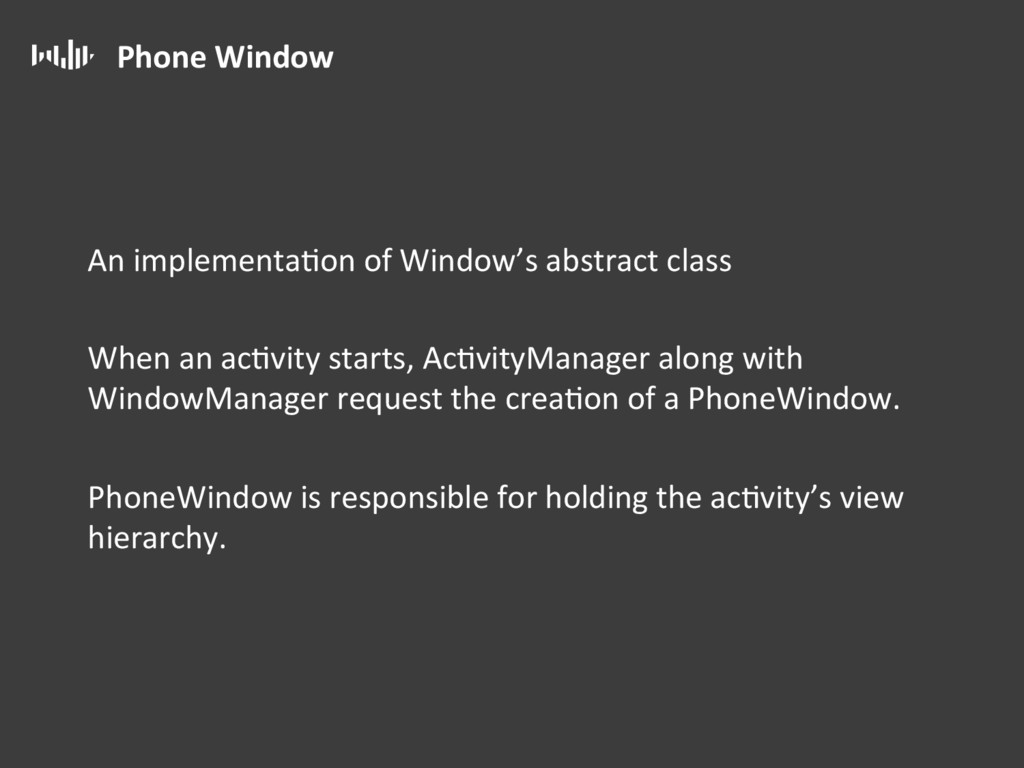

WindowManager.LayoutParams params = new WindowManager.LayoutParams( LayoutInflater inflater = (LayoutInflater)getSystemService(LAYOUT_INFLATER_SERVICE) WindowManager = (WindowManager) getSystemService(WINDOW_SERVICE) WindowManager sends all of the window metadata to SurfaceFlinger so SurfaceFlinger can use that data to composite surfaces on the display. Instead you need to display a window from a background service. An overlay requested from a ViewGroup is of type ViewGroupOverlay, which also supports adding and removing views. If you want to create a floating window that is visible in front of other applications, you can't use an activity because your activity will stop when another app comes to the foreground, and its window will be hidden or destroyed. The horizontal margin, as a percentage of the containers width, between the container and the widget.
#Add view overlay windowmanager android android
So normally you don't need to worry about windows - you just create an activity and Android will do the rest for you.īut you need to interact with the WindowManager if you want to do something unusual like create floating windows that don't fill the screen. Placement of window within the screen as per Gravity.
#Add view overlay windowmanager android code
Executing this code will show the app icon on top of my application, but when I navigate to a different window (or hit the home button), it will just show the homescreen without any icons or without my overlay.


The default window fills the screen, so that your activity's window hides any other activities - the WindowManager will display whichever window is on top. But when I try it on a device with Android 4.1 (or earlier), it does not not work correctly. When you call setContentView on an activity, it attaches that view to the activity's default window. Longer version: I have an android application in which I pop up an overlay window. Among other things, it automatically performs window transitions and animations when opening or closing an app or rotating the screen.Įvery activity has a Window that is used to display its content on the screen. Sarwar Erfans answer does not work any longer as Android does not allow adding view with to window to be. TL DR: It would be great if Appium would have a command to find and even access overlays (android views that were added dynamically with WindowManager). The Android WindowManager is a system service, which is responsible for managing the z-ordered list of windows, which windows are visible, and how they are laid out on screen. In this post, we have learn about creating a system overlay (Always on Top over all Apps).ġ)Add the following permission to Android Manifest.XML.


 0 kommentar(er)
0 kommentar(er)
